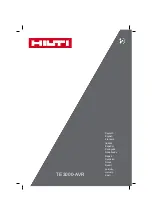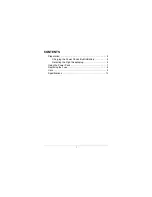
8
Battery charging
Warning!
-
Do not attempt to recharge a non-
rechargeable battery.
-
When recharging a battery, ensure that there
is adequate ventilation to allow gases to
disperse.
Regular recharging of the battery is essential. Use a
suitably rated battery charger and refer to the
battery manufacturer’s recommendations.
1
Attach the positive (+) battery charger lead to
the positive terminal of the battery, and the
negative (–) battery charger lead to the
negative terminal on the battery.
2
Insert the battery charger’s input power plug
into a mains or line socket and turn on the
power supply.
Caution!
Over-charging the battery will reduce
its life. Do not exceed the recommendations of
the battery manufacturer on recharging the
battery from a mains-powered (line-powered)
source.
Battery care and maintenance
House the battery in a suitably designed
battery box, if the battery is likely to be
exposed to the weather.
When not in use, store the battery fully
charged and recharge at regular intervals
(every 8 weeks).
Recharge a discharged battery as soon as
possible. Batteries should not be left
discharged.
Inspect the battery regularly to ensure that the
electrolyte level does not fall below the
surface of the battery plates.
Top up the battery using distilled water. Do
not overfill. Refer to the battery
manufacturer’s recommendations for more
information.
Battery safety
Ensure that the battery is well ventilated when
recharging.
Avoid temperatures greater than 50 °C
(120 °F).
Ensure the battery is not exposed to naked
flame or sparks.
Building a permanent electric
fence
Components of an electric fence
An electric fence system comprises the following
elements:
An energizer.
An earth system.
This comprises a number of
metal rods inserted into the ground, which are
connected to the Fence earth terminal on the
energizer.
Insulated underground cables.
Electric fence
wire coated in insulated plastic, suitable for
use underground or going through walls.
Used to connect the energizer to the earth
and fence.
An insulated fence.
Connected to the Fence
output terminal of the energizer. Fences can
be made to a variety of designs (see below).
Other useful components that can be added:
Cut-out switches. Installed at regular
intervals, these allow you to isolate
sections of the fence for repair.
Lightning diverter kit. Used to minimise
the damage to your energizer from
lightning conducted down the fence
line.
Typical installation
The animal receives a shock when it completes a
circuit between the fence and the earth system. The
fence below has all live wires and requires
































